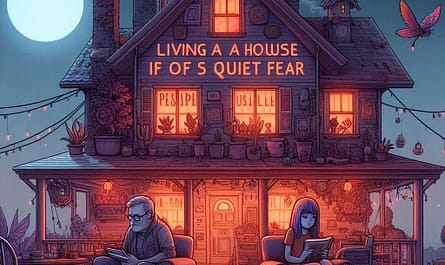Quick Strategies When You Can’t Wait for Mindset Shifts

I’ve written before about techniques that helped me manage and eventually overcome anxiety in the long run. Deep mindset shifts are life-changing, but let’s be real — they take time. And sometimes, when anxiety strikes, you don’t have that luxury. You need something that works right now.
Luckily, there are ways to calm that racing mind before it spirals out of control. You don’t need hours of meditation or weeks of journaling. These quick strategies can help you regain control when anxiety starts to overwhelm you.
Why Does Anxiety Show Up?
To understand how to fight anxiety in the moment, you first need to know why it happens. Every emotion we experience — even the unpleasant ones — serves a purpose. Anxiety, in particular, has an evolutionary function.
Think about it. Our ancestors survived because they could anticipate danger. Fear helped them react immediately to threats, like a predator lurking in the bushes. But anxiety? Anxiety allowed them to plan for dangers that hadn’t materialized yet. It’s like a built-in risk assessment system, always looking ahead and asking, “What if?”
In the modern world, though, this survival mechanism can go into overdrive. Instead of keeping you safe, it keeps you stuck in a loop of overthinking and worst-case scenarios. When that system gets too sensitive, anxiety stops being useful and starts running the show.
The Problem with Overthinking
When anxiety hits, your brain floods you with thoughts, all racing toward potential disaster. The problem is that overthinking burns a ton of energy without solving anything. You end up mentally exhausted and still anxious.
Think of it like a smoke alarm that goes off every time you toast bread. It’s not telling you about a real fire — it’s just responding to a perceived threat. And just like you’d want to reset a faulty smoke alarm, you need to reset your brain when anxiety is blowing things out of proportion.
Quick Strategies to Break the Anxiety Cycle
Here’s where the magic happens. When anxiety spikes, the goal is to interrupt the loop. You can’t always prevent anxious thoughts, but you can stop them from spiraling.
1. 5-4-3-2-1 Grounding Technique
Ground yourself in the present moment by engaging your senses:
- 5 things you can see — Look around and name objects, colors, or patterns.
- 4 things you can touch — Feel the texture of your clothes, the chair, or anything nearby.
- 3 things you can hear — Tune into distant sounds, like birds, traffic, or even your own breathing.
- 2 things you can smell — Inhale and notice any scents, even subtle ones.
- 1 thing you can taste — If nothing else, focus on the taste of your mouth.
This technique brings you back to the present, anchoring you in reality and pulling your focus away from anxious thoughts.
2. Breathe Like You Mean It
Your breathing changes when anxiety kicks in — it becomes shallow and rapid, which fuels panic. To counter this, slow your breathing intentionally:
- Inhale deeply through your nose for 4 seconds.
- Hold your breath for 4 seconds.
- Exhale slowly through your mouth for 6 seconds.
Repeat this process a few times. Slow, deliberate breathing activates the parasympathetic nervous system, which signals to your brain that you’re safe.
3. Move Your Body, Change Your Mind
Physical movement breaks the anxiety cycle by redirecting that nervous energy. You don’t need an intense workout — a brisk walk, a few jumping jacks, or even shaking out your limbs can do the trick. Movement tells your brain that you’re taking action, which helps diffuse that fight-or-flight response.
4. Name It to Tame It
Acknowledge your anxiety by giving it a name. When you label what’s happening, you engage the rational part of your brain, which helps dial down the emotional intensity. Try saying to yourself:
- “I’m feeling anxious right now, and that’s okay.”
- “This is just my brain trying to protect me, but I’m safe.”
By naming it, you create distance between yourself and the anxiety, making it feel less overwhelming.
5. Visualize a Safe Space
When anxiety escalates, close your eyes and imagine a place where you feel completely safe and at peace. It could be a childhood memory, a cozy nook at home, or a beach where you’ve felt relaxed. Engage all your senses — hear the sounds, feel the warmth, and smell the air. This visualization signals safety to your brain, calming your nervous system.
The Key: Interrupt and Redirect
All of these strategies share one thing in common: they interrupt the anxious thought pattern and redirect your brain toward something that calms or grounds you.
The goal isn’t to eliminate anxiety — that’s not realistic. Instead, the aim is to give your mind and body a chance to reset, allowing you to approach challenges from a calmer, more centered place.
Create Your Own Anxiety Toolkit
Now that you know a few strategies, build your own anxiety toolkit. Choose the techniques that resonate with you and practice them regularly. The more familiar they become, the easier it will be to use them when anxiety hits.
Over time, these quick fixes will become second nature, giving you the power to fight anxiety in the moment — without waiting for those deep mindset changes to take hold.
You’ve got this. One breath, one moment, one step at a time.



